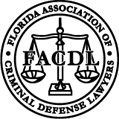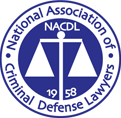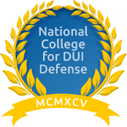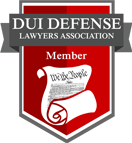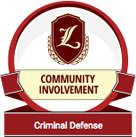- DUI
- Criminal Defense
- Florida DUI
- Traffic Offenses
- Drug Charges
- Marijuana Charges
- Violent Crimes
- Domestic Violence
- Temporary Injunctions
- Weapons Charges
- Theft Crimes
- White Collar Crime
- Juvenile Offenses
- Sex Crimes
- Violation of Probation
- Early Termination of Probation
- Seal or Expunge Criminal Record
- Criminal Appeals
- US Federal Offenses
- Misdemeanor Charges
- Felony Charges
- Co-Defendant Cases
- College Student Defense
- College Student Hearings
- FSU Students
- FAMU Students
- Florida Panhandle Arrests
- Extradition to Florida
- Bench Warrants / Warrants
- Emergency Bond Hearings
- Gambling Charges
- Drone Arrests
- Marsy’s Law
- UAS Infractions
- Introduction of Contraband
- Lying to Police
- Locations
- Case Results
- Our Firm
- Media
- Resources
- Blog
- Contact Us
The Dangers of Eyewitness Identification
June 14, 2021 Don Pumphrey, Jr. Criminal Defense Social Share
Wrongful Convictions Resulting from Eyewitness Identification
Eyewitness identification occurs in a case in which an eyewitness identifies the suspect to the police. Though eyewitnesses can be crucial in solving a case, the dangers of misidentification are all to present. In fact, eyewitness misidentification is the single greatest factor contributing to wrongful convictions in the United States.[1] According to recent data, eyewitness misidentification formed the basis for about 70% of the 350 wrongful convictions identified so far by the Innocence Project.[2] It is crucial for eyewitness identifications to be correct because they are incredibly persuasive when used at trial as first-hand knowledge is seen as bulletproof by most juries.
What Leads to an Eyewitness Misidentification?
There are several factors that can influence how accurate eyewitness identification will be. The most common factors include: (1) the unreliable nature of human memory; (2) the difficulty of cross-racial identifications; and (3) suggestive and influential law enforcement procedures.[3]
Unreliable Human Memory
Human memory is prone to error, and many outside factors can influence the degree to which an individual can recall a person or event with accuracy. However, human memory can play the most important role in convicting a defendant because, once a case has gone to trial, the eyewitness will be incredibly confident in their identification because of the influence of confirmation bias. Confirmation basis occurs when an eyewitness fills in details of a crime themselves, including aspects of the identification, in order to form a full picture.[4]
Additionally, stress and trauma have a stark effect on human memory.[5] When an individual is placed into a high-stress situation, their ability to accurately recall events is severely diminished due to the natural “fight or flight” response to fear.[6] Stress rapidly increases when a weapon is visible during the commission of a crime, and this phenomenon is called “weapons focus”.[7] This term refers to the diminished ability of an eyewitness to give a completely accurate description of the perpetrator when the perpetrator has a weapon visible during the incident.[8] Interestingly, in an experiment done on the phenomenon, experts found that, when a weapon is highly visible during the commission of a crime, the subjects of the experiment were able to recall significantly less information regarding the facial features of the suspect than the subjects who viewed a crime where a weapon was less visible.[9]
The accuracy with which individuals can recall an event sharply decreases with the more time that passes after the event takes place. However, as stated above, the eyewitness only becomes more confident in their identification despite this fact. This makes early attorney intervention in a criminal case incredibly important as they can spot the signs of misidentification and work to resolve the issue.
Cross-Racial Identification
The races of both the perpetrator and the eyewitness can play arguably the largest role in the accuracy of the identification. This phenomenon is termed “cross-racial identification” and refers to the decreased ability of a member of one race to accurately identify a member of a different race.[10] This diminished accuracy results from the fact that individuals are better at identifying members of their own race because they generally spend more time with members of their own race, making it easier to notice more subtle and nuances differences between facial and body structures.[11] In a study conducted on the issue, experts found that, when the perpetrator was of a different race than the victim, the process of identification became markedly less reliable.[12] White individuals could not identify Black individuals as accurately as they could other White individuals and vice versa.[13] This phenomenon has been known by courts, social scientists, and legal scholars alike for over a century.[14]
Suggestive Procedures Used by Law Enforcement
Police procedures tend to heavily sway the accuracy of an identification. One of the largest contributors to eyewitness misidentification is how the perpetrator is presented to the eyewitness.[15] When an officer knows who the suspect is, they can leave subtle clues to tip off the eyewitness in their identifications.[16]
Law enforcement officers use certain identification procedures to aid the eyewitness. Some of these procedures include the show-up and the lineup. The show-up has been marked as one of the worst identification procedures in terms of reliability.[17] A show-up occurs where an investigator brings the eyewitness to a location to physically show them the suspect that they apprehended. Because this usually occurs while the suspect is in police custody, eyewitnesses will unconsciously assume that the police have additional, unknown evidence to substantiate holding this individual. This will lead them to make an identification even though their personal knowledge or confidence is lacking. Lineups can occur in a variety of ways, and each way has a different measure of reliability. A six-pack photo lineup is the most commonly used and has been proven problematic in the past.[18] Law enforcement can reduce the risk of misidentification by including only one suspect per lineup, selecting proper fillers, and avoiding subtle cues to tip off the witness, but problems can still occur because the eyewitness harbors an implicit need to satisfy the officer by picking an individual, even if they are not confident in their identification.[19] This can lead to “lucky guesses” in which the witness chooses the suspect without even realizing it.
How to Reduce Eyewitness Misidentification
Florida has implemented a number of wrongful conviction reforms to reduce the number of eyewitness misidentifications.[20] Lineups conducted by law enforcement must be conducted using a double-blind procedure and the witnesses must be given proper instruction before viewing any suspects. Noncompliance with these requirements is admissible to support a claim of eyewitness misidentification and can be presented at trial for the jury to consider as evidence of the reliability of the eyewitness identification.[21]
However, one of the most important steps one accused of a crime, or a loved one, can take in eliminating eyewitness misidentification as a basis for conviction is contacting an educated and trusted criminal defense attorney. Contact a Tallahassee criminal defense lawyer as soon as possible to explore your options and ensure that misidentification does not form the basis of the conviction of you or a loved one. Don Pumphrey and the members of the legal team at Pumphrey Law Firm know the signs of eyewitness misidentification and how to ensure that it does not play a role in the criminal case of you or a loved one. Call a defense attorney today at (850) 681-7777 or send an online message to discuss your options during an open and free consultation with an attorney in our legal team.
This article was written by Gabrielle D’Esposito
[1] Eyewitness Misidentification, The Innocence Project.
[2] Id.
[3] Stenzel, C., Eyewitness misidentification: A mistake that blinds investigations, sways juries, and locks innocent people behind bars, 50(3) Creighton L. Rev. 515, 521 (2017).
[4] Jens Omdal, Believing without Seeing: The Problem of Eyewitness Misidentification, 20 LOY. J. PUB. INT. L. 29, 31 (2018).
[5] Id.
[6] Id.
[7] Kramer, T.H., Buckhout, R. & Eugenio, P. Weapon focus, arousal, and eyewitness memory. Law Hum Behav 14, 167–184 (1990).
[8] Id.
[9] Id.
[10] R. S. Malpass, “Racial Bias in Eyewitness Identification?” Personality and Social Psychology Bulletin 1 (1974).
[11] Id.
[12] Id.
[13] Id.
[14] Edwin Borchard, Convicting the Innocent (1932).
[15] Eyewitness Identification, The California Innocence Project.
[16] Id.
[17] Id.
[18] Id.
[19] Id.
[20] Florida Eyewitness Identification Reform, The Innocence Project.
[21] 92.70, Fla. Stat. Ann.




